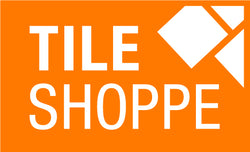An adhesive is a substance used to stick materials and objects together. Grout, on the other hand, is used for filling crevices such as gaps between floor tiles and walls. In tiling, both products come in different varieties with the type you use depending on the tiling material and the surface being tiled.
Guide to choosing a grout
Grout helps determine the durability and functionality of a tiled floor while still playing a critical aesthetic role. Here are important things you should know to choose the right grout.
Sanded vs. unsanded
Grout mixed with sand is more resistant to shrinking and cracking than unsanded grout. Consider sanded grout when the spaces between the tiles are 1/8 of an inch or less.
Cement vs. epoxy
Furan and Epoxy grouts are more durable and resistant to chemicals, stains, and water, but are more difficult to find and harder to install. Cement-based grout, on the other hand, is cheaper, more readily available and more versatile. If you’re tiling a water-prone space such as a kitchen or bathroom, epoxy grout would be the more workable option.
Color
To avoid ruining the aesthetic appeal of your floor, you should be careful with the color of the grout you choose. Consider these tips when selecting grout color:
- Look for a matching color – Matching the tile and grout color makes the grout lines less visible, significantly accentuating the tile. Use this criterion if you have selected a pretty style to prevent the grout color from the blemishing the design.
- Consider a contrasting color – This can be a great idea if you want each tile to stand out individually and also when you want to make the grouting part of the pattern. For the best aesthetic outcome, take into account other dominant colors in the room beside the tiles before choosing grout color.
Guide to choosing adhesive
Consider these factors when selecting an adhesive:
The kind of surface you’re tiling
While internal walls may go well with ready-made adhesives, interior floors require standard rapid set cement, which is fairly more durable. When tiling an external surface, consider hiring a professional to inspect it and advise you on the most suitable adhesive.
Generally, standard rapid set cement and ready-mixed tiling adhesive work well on cement board, plasterboards, and plaster while rapid set multi-flex adhesive promises the best results on wood surfaces.
The tile material
Glazed ceramic tiles can generally go well with a ready-made adhesive. Porcelain tile and glazed ceramic tiles larger than 20 square inches should be fixed with rapid set cement. Most other types of stone tiles require rapid set multi-flex adhesive.
Ready-mixed adhesives vs. standard rapid set adhesives vs. rapid set multi-flex
Ready-mixed adhesives come in fluid form and are ready to be used without additional treatment. Conventional rapid set cement, on the other hand, comes in powder form and needs to be mixed with water before being applied. Rapid set multi-flex is the same as standard rapid set cement but has an additional latex additive, which increases the adhesive flexibility.


